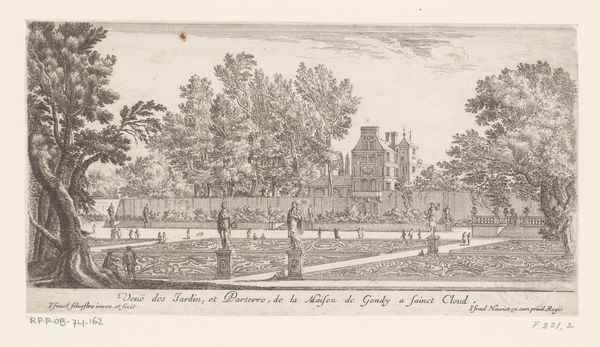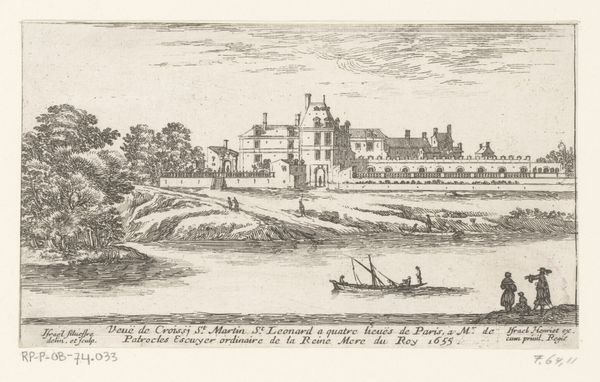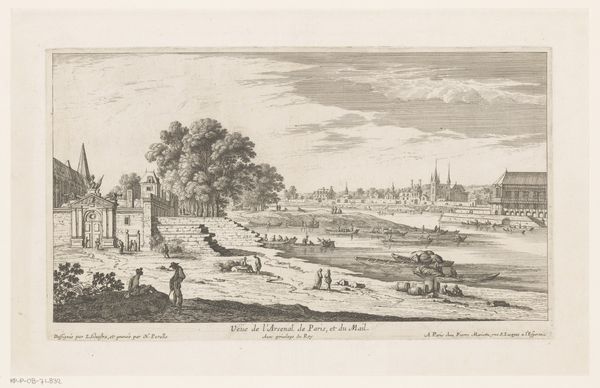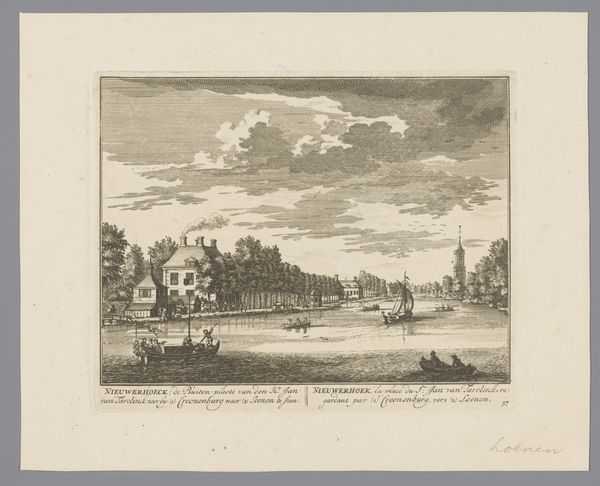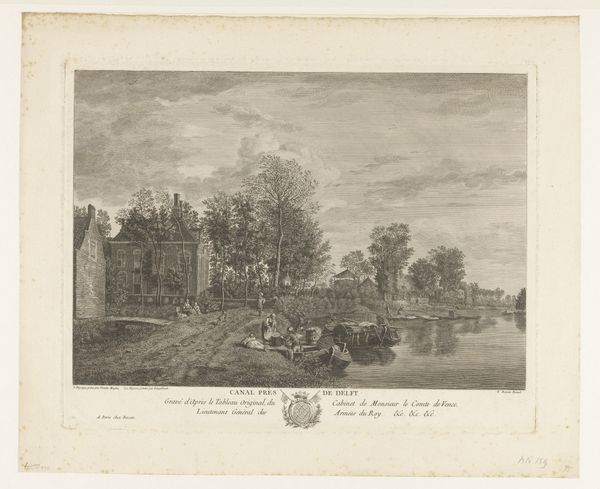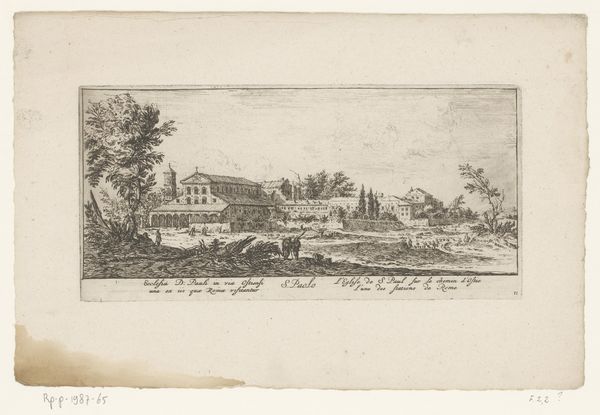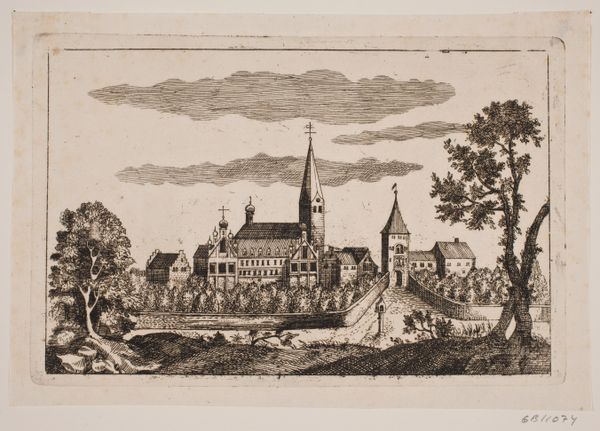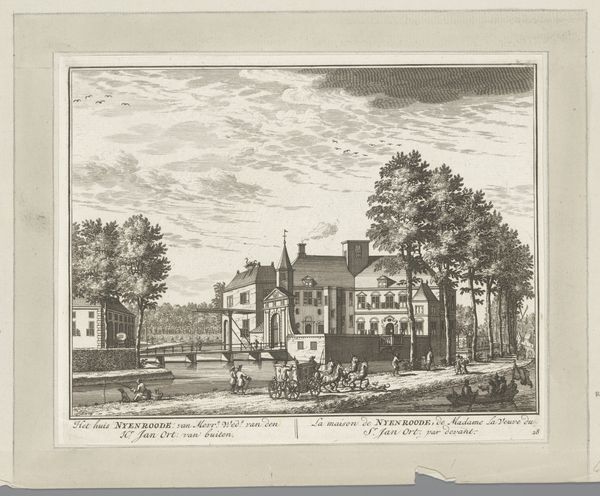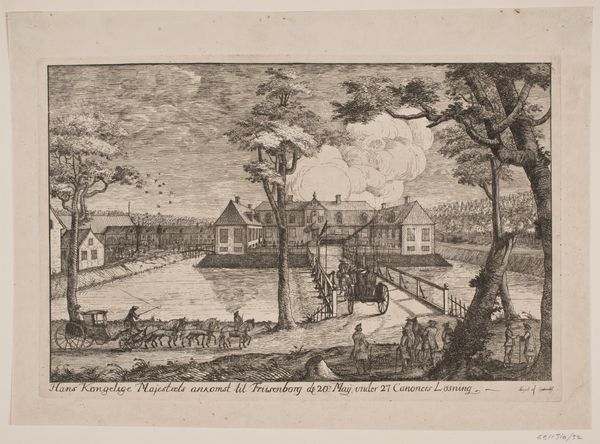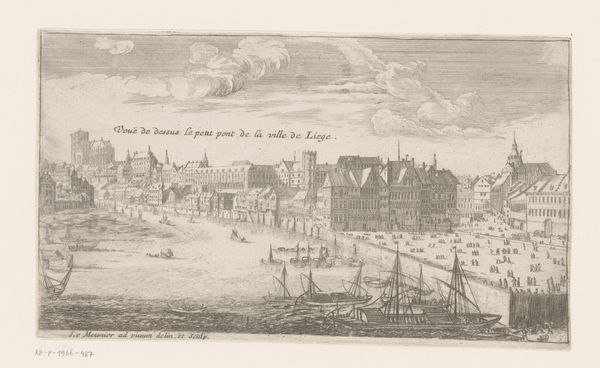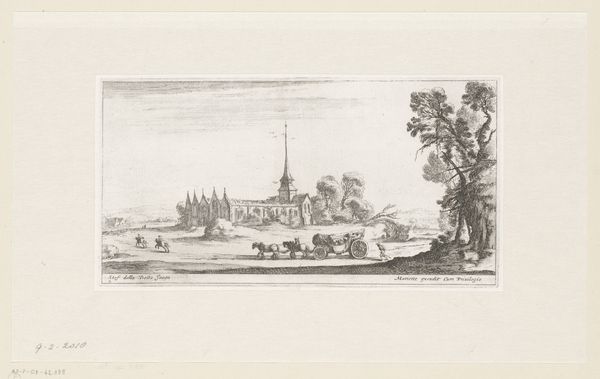
print, intaglio, engraving
#
baroque
# print
#
intaglio
#
landscape
#
etching
#
cityscape
#
history-painting
#
engraving
Dimensions: 225 mm (height) x 348 mm (width) (plademaal)
Poul Isac Grønvold made this etching called Frederik V's Arrival at Skanderborg Castle sometime in the 18th century. It's essentially a series of precisely incised lines on a copper plate, which would have been inked and then printed onto paper. The sharp, deliberate marks used in the etching process allowed Grønvold to capture the details of this royal procession and the architecture of the castle. Look closely and you'll see how the artist used hatching and cross-hatching to create areas of shadow and depth, giving form to the figures and the landscape. The printmaking medium meant the image could be reproduced many times over. In that way, it’s related to social issues of labor, politics, and consumption. Think of it as a kind of early propaganda, intended to spread the image of the King's visit far and wide. Understanding the material and the making process helps us to appreciate the social and cultural significance of this artwork, and to consider how printmaking democratized image-making in the 18th century.
Comments
No comments
Be the first to comment and join the conversation on the ultimate creative platform.
